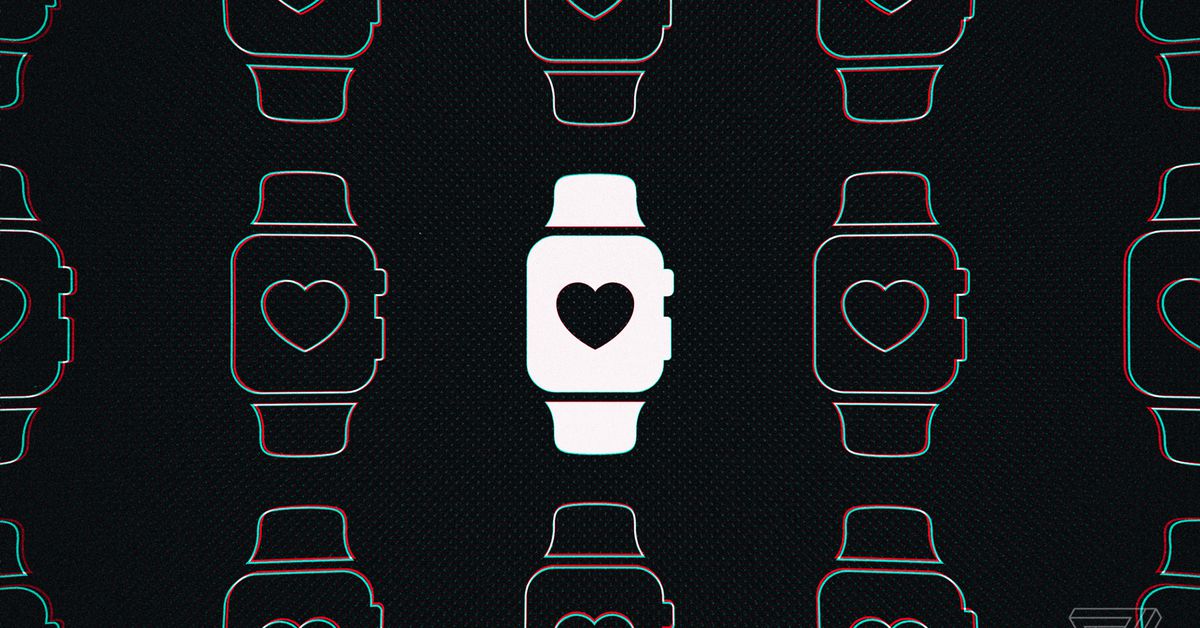
One year after getting diagnosed with atrial fibrillation, a heart condition that causes an irregular heartbeat, a 70-year-old woman was back for another diagnosis: new-onset health anxiety triggered by her smartwatch. Despite not having concerning symptoms, the patient became more and more preoccupied with and worried about notifications from her watch. Over the one-year period, she took 916 ECG recordings through her device.
That patient isn’t an outlier, says Lindsey Rosman, an assistant professor of medicine in the division of cardiology at the University of North Carolina School of Medicine, who wrote about the case in a new paper. She was just one example of a pattern seen in cardiology clinics. “Patients with underlying arrhythmias, heart palpitations, or irregular heartbeats were coming into clinic with literally stacks of papers with data from their smartwatches,” she says.
Smartwatches are a great tool in cardiology — they help doctors educate patients, can be great tools for patient engagement, and give researchers access to big-picture data on health trends. But for some patients, they can cause more harm than good. “Wearables are amazing,” Rosman says. “At the same time, they may have an unintended effect for some patients where they create and perpetuate that anxiety.”
Some of the problem likely comes from the constant access to on-demand health information. “It can create this pattern of pathologic symptom monitoring,” she says.
Rosman and her colleagues also noticed that many patients were upset by innocuous readings — like elevated heart rate notifications from exercise — or when the wearables said that a reading was inconclusive or inconsistent. Those results were misinterpreted as a potential danger, and pushed them to use the device more and more frequently. That’s what happened with the 70-year-old patient: her ECG usage escalated anytime she got a notification.
The sheer volume of information produced when patients are constantly checking their heart rhythm can be hard for doctors to manage — there’s only so much time in a regular patient visit, and it’s not enough to get through dozens of heart rhythm readings. It can also strain the relationships between doctors and patients: patients might feel like they’re having a problem, but their doctor may not see a need to change their treatment. “There’d be a discrepancy between what patients and families are experiencing and think is dangerous, and what the healthcare providers are doing,” Rosman says.
There’s a chance this type of anxiety may appear with other types of health data gathered on smartwatches, not just heart rate data. People might fixate on breathing rate or blood oxygen level information because of the COVID-19 pandemic, for example, Rosman says.
It’s not clear yet what proportion of patients might experience this type of anxiety, or what risk factors might make someone more likely to experience it. Those are questions Rosman hopes to answer going forward — she’d like to get a better picture of how this type of anxiety affects patient’s health and quality of life, and if those patterns push people to seek out unnecessary medical care. The 70-year-old patient is only one example, but in that case, she saw a healthcare provider 12 times over the year, even though she didn’t have any physical symptoms that would prompt a visit.
The chance that someone might develop health anxiety while using a wearable doesn’t detract from their potential benefits. But it’s an issue that doctors, tech companies, and other stakeholders should consider, Rosman says. The groups should work together to develop better patient education information around how people should use the device and how they should interpret that data. Right now, information around health data from tech companies tends to be complicated.
“We need to have something at more of a fifth grade reading level,” Rosman says — that’s typically the target for patient education materials, she says. It should be in a variety of different formats, as well, like in an auditory form.
“It’s a large task, but a reasonable task,” she says. “I think if we’re going to create the technology, we need to create the patient information so that they can understand and use it effectively.”

